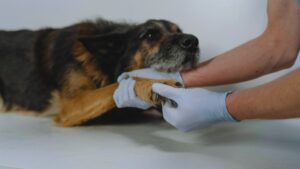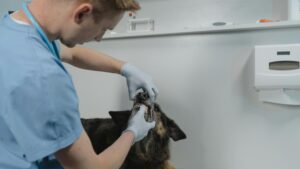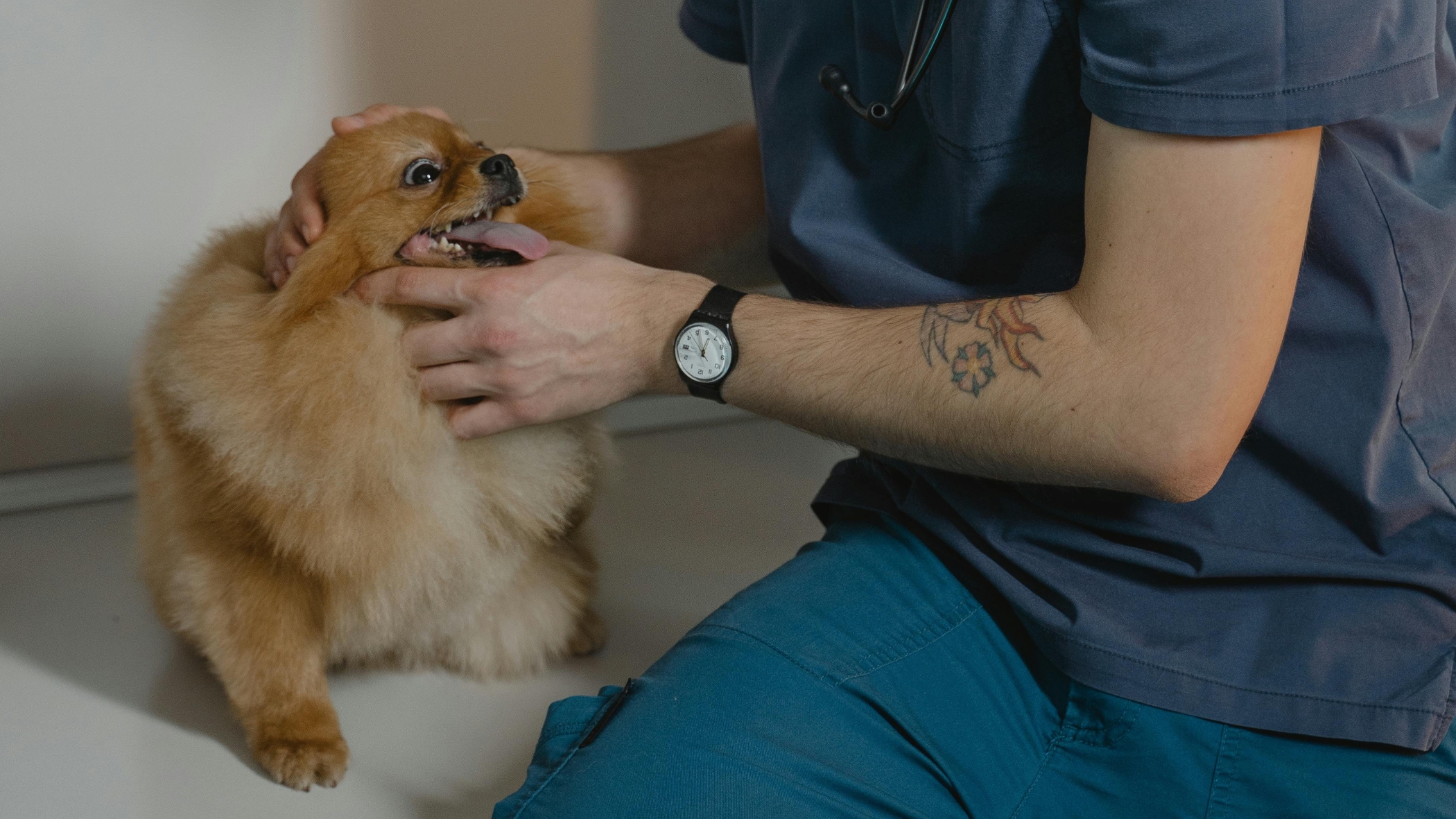Life is full of emergencies, and for pet owners, their cherished animal companion’s sudden health crisis can be a terrible experience. Knowing how to manage events like accidents, unexpected illnesses, or poisonous ingestion can have a significant impact on the outcome. Access to emergency veterinary services is essential since pets don’t usually become ill or get hurt during convenient hours.

We at our clinic are aware of the stress that accompanies a pet emergency. For this reason, we are dedicated to offering complete, 24-hour emergency care, making sure that every pet receives the prompt medical attention it requires. Our ultimate objective is to develop a 24-hour emergency veterinary clinic that is prepared to handle any urgent situation. This blog post attempts to provide you with the tools you need to react appropriately, recognize typical emergency scenarios, and improve your understanding of pet crises.
Preparing for a Pet Emergency
- Know what to expect at the emergency vet, including the triage process and wait times.
- Have a plan in place for emergency situations, including a list of emergency resources and contacts.
- Keep important phone numbers and addresses handy, such as the emergency vet hospital and your regular veterinary clinic.
Common Pet Emergencies
- First aid treatment at home for common emergencies, such as severe bleeding and wound management.
- Recognizing symptoms of an ongoing veterinary emergency, such as seizures in dogs and cats.
- Knowing when to seek immediate care, including situations requiring emergency care like poison exposure and foreign body ingestion.
The Role of an Emergency Veterinarian
- What does an emergency veterinarian do, including providing immediate veterinary care and emergency medicine.
- Skills and qualifications of an emergency veterinarian, including remaining calm under pressure and effective communication.
- Choosing the right emergency hospital, including considering factors like distance and availability of emergency resources.
What Qualifies as an Emergency for Pets?
Any circumstance where a pet’s life or health is in jeopardy and needs prompt medical intervention is referred to as a pet emergency. But not all emergencies are as clear-cut as a cat falling down a high cliff or a dog getting struck by a car. Pet owners must be able to spot subtle clues that anything may be amiss because many emergencies are not immediately obvious.

While some emergencies may be internal problems like poisoning or heart attacks, others may include physical injuries or accidents like shattered bones or bleeding. Other signs of an emergency include unresponsiveness, respiratory difficulties, or convulsions. Because of this, it’s critical to remain alert and always err on the side of caution. The best course of action is to seek veterinary attention right away if your pet is exhibiting any strange behavior or symptoms.
Unintentional Ingestion: A Dangerous Situation When Curiosity Becomes Toxic
Accidental ingestion is one of the most common veterinary care crises. Due to their innate curiosity, pets—especially young ones—often chew or eat inappropriate objects to learn more about their surroundings. Although this interest is usually innocuous, if your pet consumes toxic things, it could have catastrophic effects.

Pets can become seriously ill or even die if they consume any of the many common household objects that are harmful to them. Among the most prevalent harmful compounds are:
Theobromine, which is poisonous to cats and dogs, is found in chocolate.
Dogs who consume even trace amounts of raisins or grapes may develop renal failure.
Antifreeze: Even in trace amounts, it is extremely harmful to pets.
Drugs: If taken in excess, drugs intended for humans or pets can be dangerous.
Cleaners for the home: A lot of cleaning supplies are poisonous and can harm organs or cause burns.
Plants: Some plants, including poinsettias and lilies, are poisonous to dogs and cats.
Warning Signs to Look Out for
Early detection of the symptoms of poisoning or unintentional intake is crucial. Depending on the substance used, symptoms can vary, but typical indications include:
- Diarrhea or vomiting is frequently the body’s method of eliminating toxins.
- Severe bleeding and wound management, including expert guidance on managing dog wounds
- Weakness or lethargy: Your pet may appear particularly lethargic or passive.
- Seizures in dogs and cats: understanding and managing, including recognizing symptoms and providing aftercare
- Poison exposure and foreign body ingestion, including swift action and safe pet care. A typical symptom of nausea or poisoning is excessive drooling or foaming at the mouth.
- Abdominal pain: Your pet may show signs of discomfort, cry, or refuse food.
- Breathing difficulties: A severe symptom that could point to a systemic response to a poison.
How We Handle Emergencies in Ingestion
Time is of the essence if your pet has consumed a dangerous substance. We take prompt action to stabilize the pet and stop additional damage when a client with an ingesting emergency shows us at our clinic. To determine the full degree of the toxin’s effects on the body, we frequently start with diagnostic testing, which may include blood work and occasionally urine testing.
We might select one or more of the following treatments, depending on the circumstances:
In order to help remove the toxin from the stomach before it may enter the bloodstream, we may induce vomiting if the ingestion was recent.
- Stomach pumping: In more extreme situations, we might extract poisons straight from the stomach using a pump.
- Activated charcoal: This material has the ability to absorb some poisons and stop the body from absorbing them.
- IV fluids: To replenish the pet’s fluids and support organ function.
- Medication: To counteract the effects of the toxin, antidotes or other medications may be given.
Patients may require more intensive treatments, such as hospitalization and monitoring if the consumption is serious or involves certain compounds (such as antifreeze).
Accidental Falls and Injuries: Timely Intervention Is Essential
When Mishaps Occur
Emergency veterinary consultations are also frequently prompted by unintentional injuries, such as falls. Despite their agility and curiosity, pets—especially dogs and cats—can nevertheless have accidents. Serious injuries can occur from falling from furniture, being struck by a car, or even slipping on ice.

Even though not every fall leads to an emergency, some injuries can result in fractures, internal bleeding, or other serious illnesses that need to be treated right away. Even if your pet appears to be walking or acting normally immediately following an accident, it’s crucial to intervene quickly.
What Takes Place at the Clinic When a Pet Is Hurt
Stabilizing the animal and halting additional damage are our top priorities when a pet is brought to our clinic with injuries. To determine the extent of the injury, a comprehensive physical examination is frequently the first step. We can determine whether there are any broken bones, internal bleeding, or organ damage with the use of diagnostic procedures like X-rays and ultrasounds.
We might immobilize the leg or use a splint if the injury involves a fracture. Surgery might be necessary in more serious situations to fix internal damage or fractured bones. A crucial component of treatment is pain management, and we will give your pet the right drugs to keep them comfortable while they heal.
How Soon Must You Get There?
The sooner you respond to any emergency, the better off your pet will be. It’s crucial to take your pet in for a professional checkup right away, even if it appears to be unaffected by an accident or illness. Internal bleeding, poisoning, and shock are examples of conditions that can progress rapidly and may not manifest symptoms until it is too late.
A pet that has consumed something poisonous, for instance, might not exhibit symptoms at first, but by the time they do, serious harm may have been done. In the same way, a pet with a broken limb could at first appear limp, but it could actually be experiencing internal ailments that only a veterinarian can detect.
If you are unsure if your pet’s condition is an emergency, it is always safer to take it in for a professional evaluation. Early intervention can save lives.
Emergency Veterinary Care
What happens during the triage process, including assessment by a veterinary technician or veterinarian?
Levels of triage in vet hospitals: immediate, urgent, and stable, including understanding the differences and what to expect.
What determines ER wait times, including the severity of other emergencies and the triage status of other pets?

Getting Your Pet to an Emergency Veterinary Hospital
- Tips for a smooth trip to the emergency clinic, including staying calm and bringing important information.
- What to expect during the emergency vet visit, including the triage process and potential wait times.
Overnight Care in a 24/7 Emergency Center
- What happens during overnight care, including monitoring and treatment by dedicated staff and specialists?
- Planning for overnight care and monitoring, including understanding the needs of your pet and the services provided by the emergency hospital.

Pet Owners’ Responsibilities
- Being prepared before a pet emergency, including having a pet first aid kit and knowing your pet’s medical history and needs.
- Knowing your pet’s medical history and needs, including providing information to the veterinary team and understanding treatment options.
Responding to Pet Emergencies
- Understanding the importance of prompt action, including recognizing symptoms and seeking immediate care.
- How to respond effectively in a pet emergency situation, including staying calm and following the advice of the veterinary team.
Emergency Resources
- Having a list of emergency resources and contacts, including the emergency vet hospital and your regular veterinary clinic
- Knowing what to do in case of a pet emergency, including providing first aid treatment and seeking immediate care
FAQs
What is ingestion by accident in pets?
Accidental ingestion happens when a pet consumes anything dangerous, including chemicals, plants, or food. Poisoning, digestive disorders, or serious health concerns might result from ingestion.
If your pet is hurt, what should you do?
Look for indications of pain, trouble moving, or behavioral changes if your pet is hurt. Make quick contact with an emergency veterinarian and securely transport your pet for examination and care.
Do you offer emergency services around the clock?
Indeed! We take pride in providing emergency veterinary care around the clock. We can refer you for urgent care to a network of reliable clinics if we are not available.
Conclusion
Recap of key points and takeaways for pet owners, including the importance of being prepared and knowing when to seek emergency veterinary care. The importance of being prepared for pet emergencies and knowing when to seek emergency veterinary care, including understanding the role of emergency veterinarians and the services provided by emergency hospitals
Many pet owners may find emergencies terrifying, but with the correct information and planning, you can make sure your pet receives the assistance they require quickly. You can better protect your pet by being aware of the warning signals, knowing what to do in an emergency, and knowing how to react. Pet first aid courses can empower owners to address minor issues and provide valuable support until reaching the medical team at an emergency hospital or their family veterinarian, ultimately contributing to the pet’s health and well-being.
Never forget to contact your veterinary clinic immediately if you think something is amiss. Always have your veterinarian’s number and address on hand, and don’t be afraid to call us if your pet needs help.




